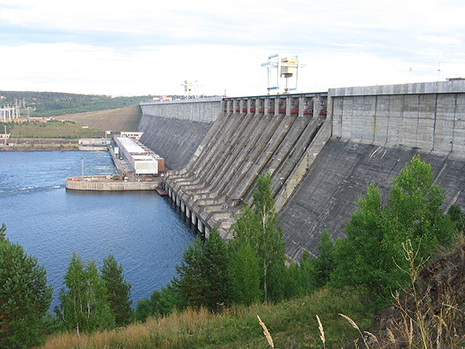“Without outside financing there seems to be no chance Rogun will ever be finished,” Pannier said.
However, Pannier noted that neighboring Uzbekistan opposes Rogun, and that fact stops foreign investors from becoming involved in the project.
“Potential outside investors are wary of getting involved in a dispute between Tajikistan and Uzbekistan and have stayed away from the Rogun project, though Iran has at times expressed an interest in joining the project,” he said.
There are several reasons for Uzbekistan’s negative stance on the HPP, according to the expert. First of all Uzbekistan opposes Rogun because of the danger of constructing such a high wall in an area known for high seismic activity.
“If the wall breaks it would allow a torrent of water to spill out that would flood areas downstream, including regions of eastern Uzbekistan,” Pannier said.
Moreover, Uzbekistan says during the time the reservoir for the dam is being filled less water would flow into the Amu-Darya river and that would have a negative effect on agriculture in Uzbekistan and further downstream.
In addition, the expert said that some have suggested a third reason Uzbekistan objects to Rogun is that if the dam is constructed Tajikistan would not only have enough electricity for domestic consumption but would have additional electricity to export to Afghanistan, Pakistan and possibly even India.
“Uzbekistan would like to do the same but might not have the opportunity if Rogun is built and generating the planned 3,600 MW annually,” Pannier said.
The expert noted that Tajikistan, in turn, says Rogun would be safe, even if a major earthquake struck, and Dushanbe has insisted that the level of water reaching Uzbekistan would not be seriously affected while the reservoir is being filled (a process that could take several years given the size of the reservoir).
Pannier also recalled that last year the World Bank released a report, stating that the dangers from Rogun were “rather small and easily mitigated.” However, Uzbekistan rejected the findings and said that they did not meet international standards, and continues to insist there are real dangers in building the HPP.
Uzbekistan also rejected Tajikistan’s invitation to participate in building Rogun as a way of allowing Tashkent to carefully monitor progress in the HPP’s construction.
The Rogun project was developed during the Soviet era. Construction of the HPP was initiated in 1976, but stopped after the collapse of the Soviet Union.
Earlier, Uzbek First Deputy Prime Minister Rustam Azimov said that Uzbekistan would never support the Rogun project.
More about:
















































